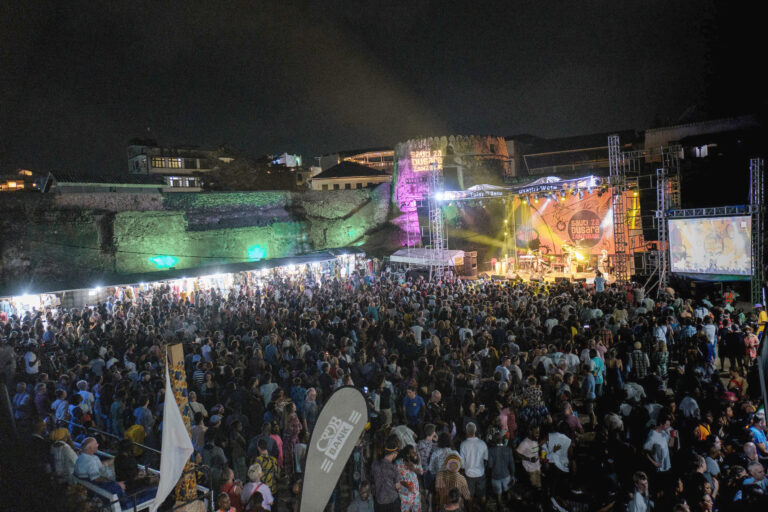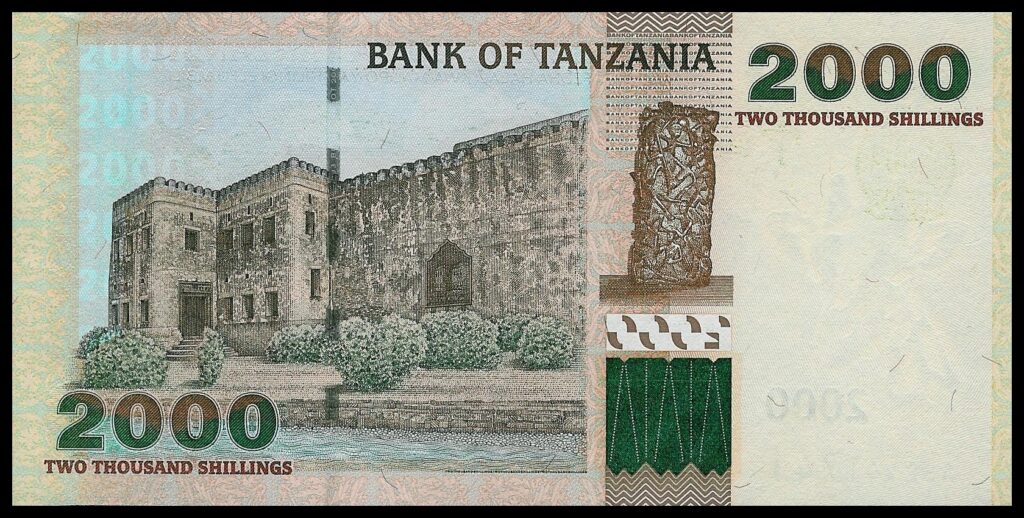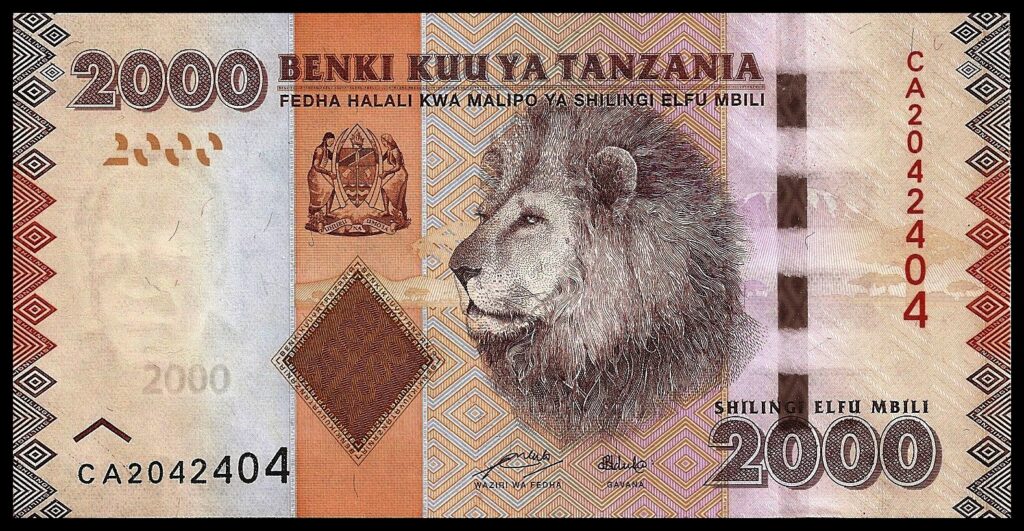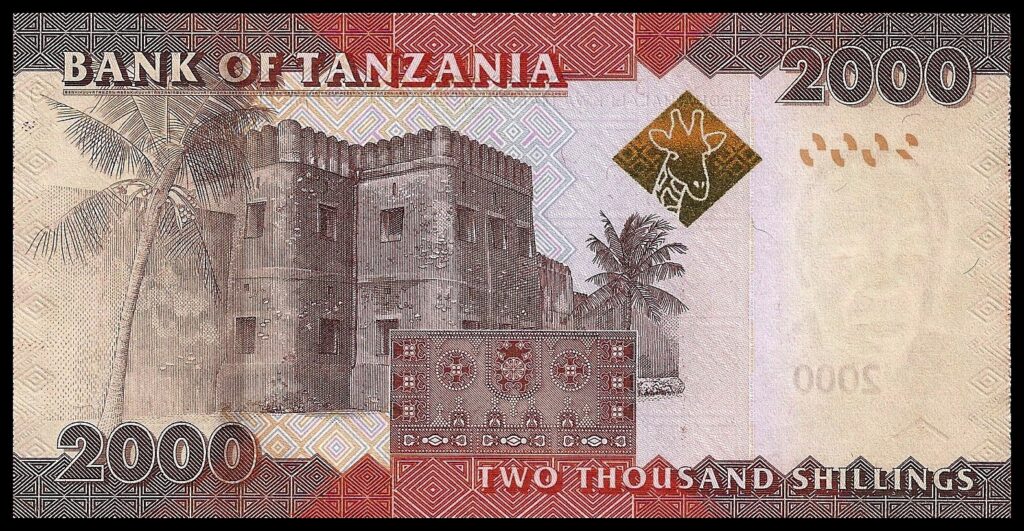Tanzania
The Old Fort / Ngome Kongwe in Zanzibar
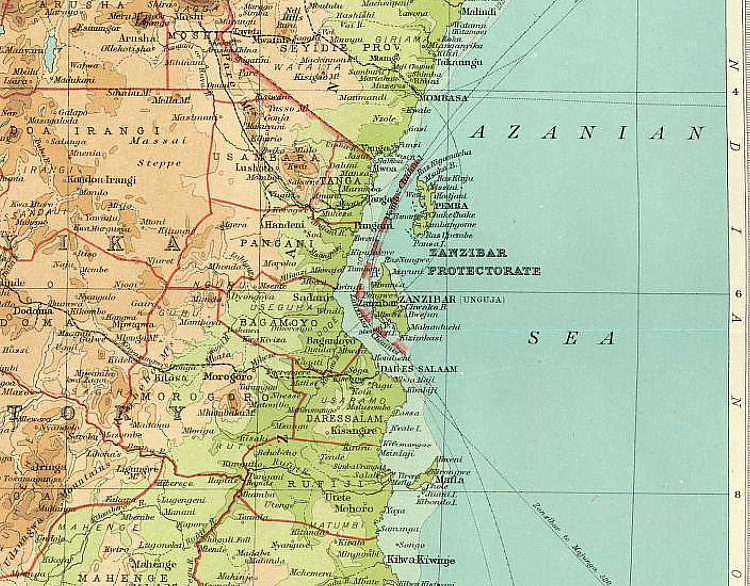
In 2003 Tanzania introduced the new the 2000 Shilingi, a denomination, into its series of issued banknotes. A popular denomination, it was an attractive note with the front of the banknote having a vignette of a lion standing proudly in the grass in front of Mt. Kilimanjaro, and trees between them to suggest a savannah. The back of the banknote shows a portion of the “Old Fort” also known as the “Arab Fort”, “Omani Fort” and “Ngome Kongwe” in Stone Town, Zanzibar, an autonomous island under Tanzanian suzerain. To the right of the Old Fort is a depiction of a wooden sculpture of the Makonde people from the village of Ujamaa called the “Tree of Life” or the “People Pole.”
In 2010 Tanzania changed the design of the 2000 Shilingi banknote, though it kept the overall imagery from the previous issue. On the front the lion changed to a Lion’s head looking to the left. You will have to look a little harder to see the images of Mt. Kilimanjaro and trees, but they are there, partially hidden by the lion and the security thread. The rear of the newer 2000 banknote has a different and larger section of the Old Fort with a detail of one of its ornamental bricks in the foreground.
Both notes are quite attractive and, even if one did not know it was a Tanzanian banknote, it gives an immediate impression of an African banknote with the main front designs being the Lion. It is the Old Fort, however that will be discussed in detail below.
After 200 years of Portuguese control, Zanzibar was wrested from the European nation and the Ngome Kongwe, or the Old Fort, was built by the new Omani occupiers and Merchants between 1698 and 1701 to defend against the Portuguese and other competing groups who were feared to take the Island back.
The Old Fort is a large brick building with crenellated battlements. It was built on the site of a Portuguese church, parts of which were incorporated into the fort’s structure.
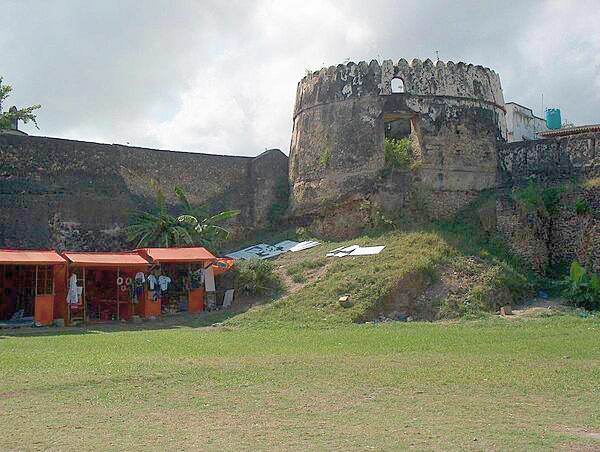
Other than use as barracks by the military, the Old Fort didn’t see any actual battles, even during the famous Anglo-Zanzibar War. As part of a British Protectorate, Zanzibar was ruled by the Pro-British Sultan Sayyid Hamad bin Thuwaini Al-Busaid. Unfortunately, he was killed and replaced by his cousin Sultan Khalid bin Barghash who did not meet the British requirement of obtaining permission from the Consul of the British Protectorate, which the British took offense to and declared war. The British navy sunk a royal yacht, a couple of small boats and bombarded the Royal Palace, setting it afire and destroying most of the resistances artillery and machine guns. No action took place at the Old fort.
This Ango-Zanzibar War occurred August 27th, 1896 at 9:00 and officially ended at 9:48 making it the shortest war in history. About 500 casualties were recorded of the Sultan’s forces while only one British sailor suffered minor wounds.
While not used for actual battle, the fort was used for other purposes as well, including some time as a prison during the 1800’s. Records show that there were several executions that took place along the East Wall of the Old Fort during that time.
Then in the first half of the 1900’s the Old Fort was turned into a Railroad Depot Station connecting to the town of Bububu and in 1949 it was reutilized again as a woman’s tennis club. Then in 1964 the Zanzibar Revolution took place. While as many as 20,000 were killed, there was no action which utilized the Old Fort as an actual fort. The revolution did change things, though.
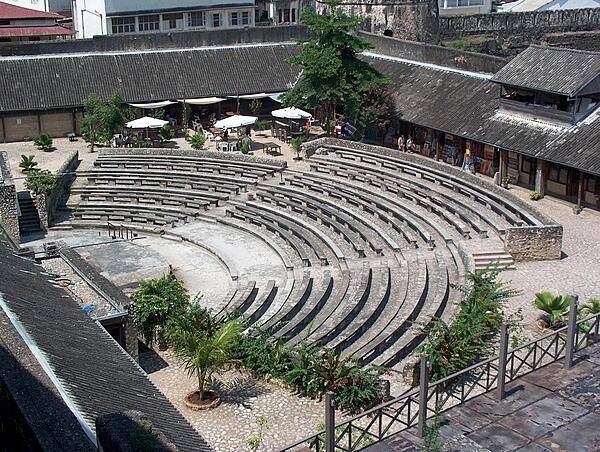
Once the Sultanate was ousted in the revolution, Abeid Amani Karumi was placed as the first president. The island being under British influence was seen as a potential toe-hold for communist governments and East Germany, China and Russia recognized the new government and quickly flew foreign advisors to Zanzibar. While this was happening, a nervous world awaited potential military action, but it never took place. Instead, Zanzibar’s new president Karumi entered into talks with Tanganyika, less than 30 miles away on the African Mainland and also under British influence. Together, Zanzibar and Tanganyika merged, which in turn subverted communist infiltration of the island. On April 29, 1964, the new nation of the United Republic of Tanganyia and Zanzibar for officially formed. Just over six months later, on October 29th, 1964, the country’s name changed to Tanzania, a combination of the names Taganyika and Zanzibar. Meanwhile, the Old Fort sat patiently.
Today the Old Fort is used as a public space that serves as a marketplace and open air theater. It is free to the public and has become a prominent tourist destination in Stone Town.
